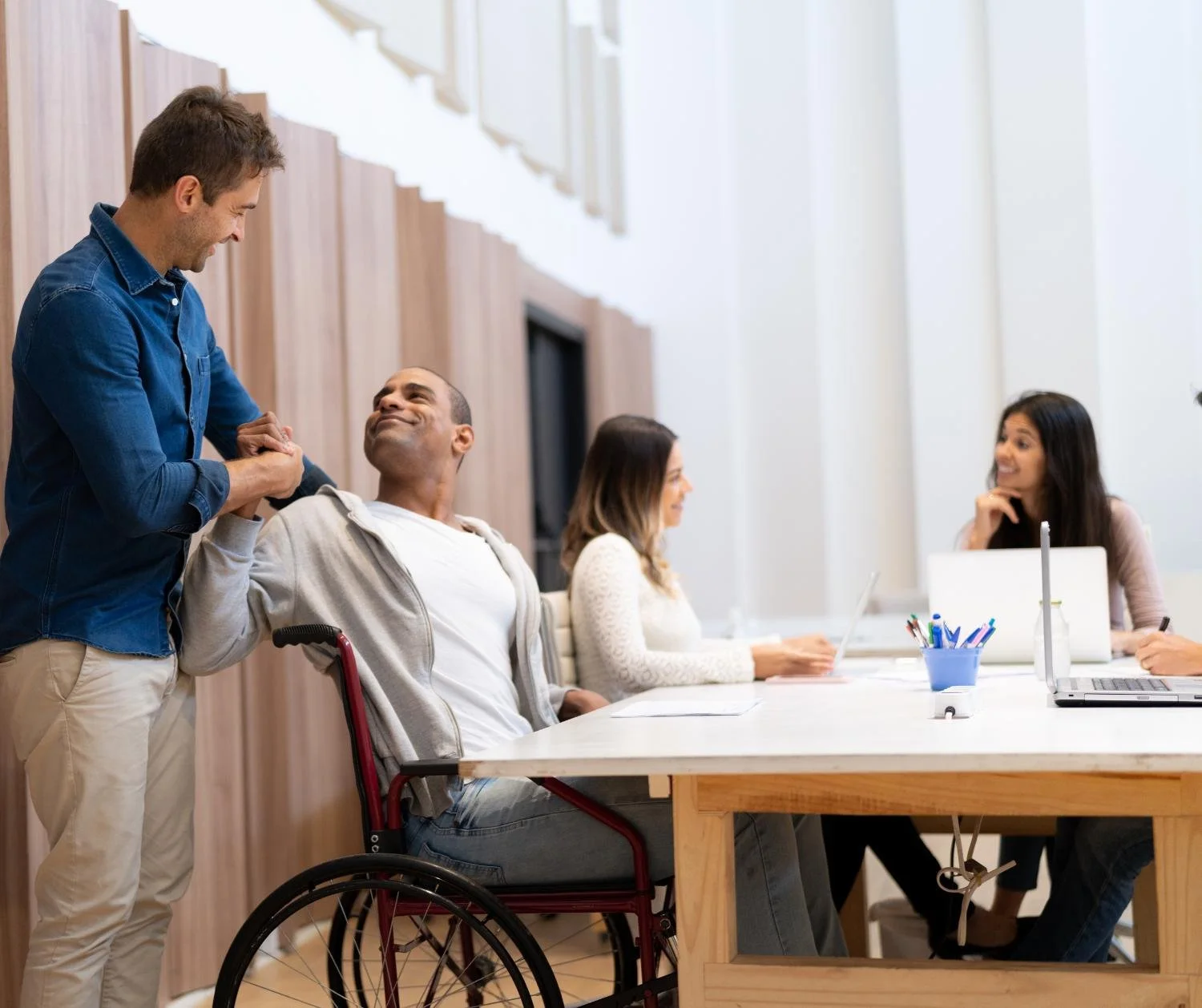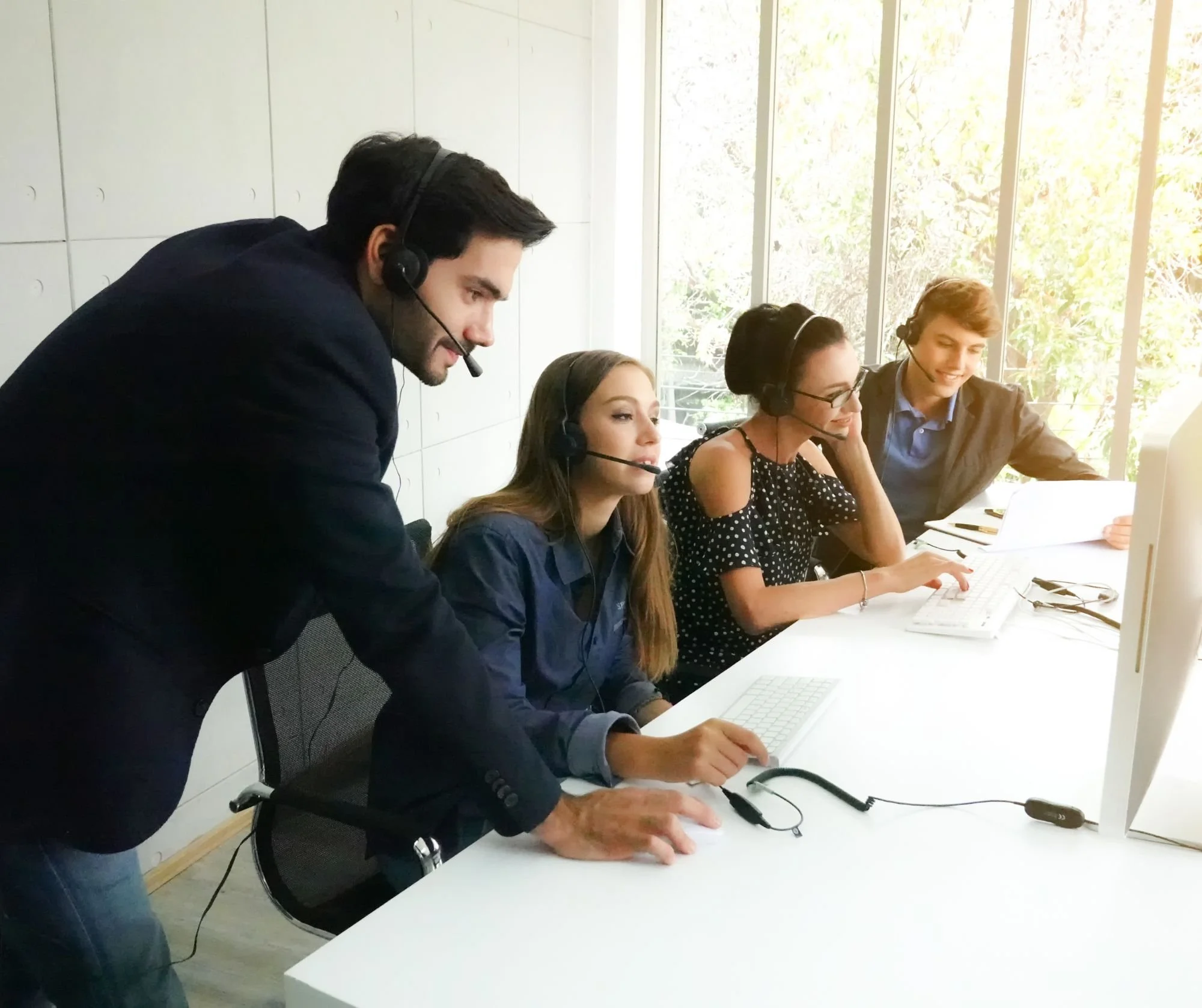Active Listening
Detailed Explanation:
Active listening is the practice of fully engaging with a speaker to understand their message, both verbally and nonverbally. It involves concentrating on what is being said, interpreting the speaker’s intent, and responding thoughtfully to ensure mutual understanding.
Active listening is a crucial skill in effective communication and is widely used in personal relationships, professional settings, and therapy sessions. Key components include maintaining eye contact, paraphrasing, asking clarifying questions, and avoiding interruptions.
Examples of Active Listening:
Active listening during a team meeting might involve nodding, maintaining eye contact, and summarizing key points to ensure clarity.
A communication coach practicing active listening may paraphrase a client’s concerns, saying, “What I hear you saying is...” to confirm understanding.
In a personal conversation, active listening can include giving undivided attention and providing verbal affirmations like “I understand” or “Tell me more.”
Related Terms:
Frequently Asked Questions About Active Listening:
What is active listening?
Active listening is fully concentrating, understanding, and responding to a speaker’s message.Why is active listening important?
It fosters better communication, reduces misunderstandings, and strengthens personal and professional relationships.How can active listening be practiced?
Techniques include maintaining eye contact, paraphrasing the speaker’s message, and asking clarifying questions.Who benefits from active listening?
Everyone benefits, but it is especially valuable for professionals like therapists, educators, and leaders.Can active listening improve communication skills?
Yes, it enhances understanding and empathy, which are critical for effective and meaningful interactions.
Connected Speech Pathology Articles about Active Listening
Soft skills training helps adults communicate more clearly in everyday workplace conversations. When employees learn to listen actively, manage their reactions, and express ideas calmly, teamwork becomes smoother and more productive. This post shows how practical coaching methods strengthen communication habits that support confidence, collaboration, and long-term professional growth.
Sounding boring in professional settings often happens when your voice stays at the same pitch, pace, and rhythm, even when the message deserves more energy. Small, intentional changes in how you use your voice can make your communication clearer, more engaging, and easier for people to follow. This post shows you practical ways to add movement, presence, and emotion to your speaking so your delivery feels dynamic instead of flat.
Persuasive communication begins with clear language and steady confidence, helping people understand your message without effort. When you combine focused points with a simple structure, your ideas feel more convincing in both speaking and writing. This guide shows you how small communication habits can strengthen your influence and make your voice more effective.
Strong written communication skills help you express your thoughts clearly, build trust, and make a lasting impression in both personal and professional settings. When you write with clarity, confidence, and respect for your reader, your message carries more weight and credibility. With consistent practice and feedback, you can refine your writing to communicate effectively and leave a positive impact every time.
Nonverbal communication training for adults and teenagers helps people understand the powerful messages sent through body language, facial expressions, tone of voice, and gestures. By becoming more aware of these silent cues, individuals can express themselves more clearly and interpret others with greater accuracy. With professional guidance, teens and adults can build confidence, strengthen relationships, and communicate with authenticity in both personal and professional settings.
If you often walk away from conversations wishing you’d said less or said it better, you’re not alone. Rambling happens when nerves or excitement take over, but with a few practical strategies, you can learn to slow down, focus, and communicate clearly. This guide will show you how to stay on topic, speak with confidence, and make every word count in conversations, meetings, and interviews.
Strong verbal communication skills shape how we connect with others, influence perceptions, and build trust in both personal and professional settings. By focusing on clarity, active listening, tone, and nonverbal cues, you can make your messages more impactful and engaging. With consistent practice and thoughtful communication, every conversation becomes an opportunity to strengthen relationships and express your ideas with confidence.
A strong speaking voice creates impact by shaping how your message is received and how confidently you are perceived. Many people struggle with weak volume, rushed delivery, or stage fright, which can cause their ideas to be overlooked. Voice training with a speaking voice coach helps build confidence, control, and presence, enabling your words to connect with every audience.
A communication coach helps you refine the way you speak, listen, and connect so your message lands with clarity and confidence. Coaching sessions offer practical experience, constructive feedback, and strategies tailored to your professional objectives. With the proper support, you can overcome communication barriers and develop the skills necessary for effective leadership, presentations, and workplace relationships.
Executive voice coaching empowers professionals to use their voice as a strategic tool for influence and leadership. By refining pitch, tone, and delivery, you can project confidence, clarity, and authority in every conversation. This targeted training builds communication skills that strengthen professional relationships and enhance career success.
Business communication skills training can transform how you speak, write, and connect with others at work. By focusing on real-world challenges, personalized strategies, and consistent practice, these programs help you build confidence and clarity in every interaction. May your goal be career growth, more decisive leadership, or improved teamwork; the proper training can help you achieve lasting results.
Clear, confident communication is a game-changer in today’s workplace, but it doesn’t always come naturally. Whether you're leading meetings, collaborating with teams, or writing emails, strong communication skills help you connect more effectively and grow professionally. Professional communication training gives you the tools to speak with clarity, listen with empathy, and succeed with confidence, no matter your role.
Clear verbal communication helps you connect with coworkers, express your ideas confidently, and avoid misunderstandings that slow down progress. However, even experienced professionals can struggle with tone, timing, or conveying their point effectively under pressure. With small, consistent changes, you can enhance your speaking and listening skills and foster stronger, more effective relationships at work.
If you’ve been granted professional development funds but aren’t sure how to use them, consider investing in skills that offer lasting returns. Communication coaching and accent clarity programs can transform the way you present yourself in meetings, interviews, and leadership settings. With the proper support, your professional growth can become more strategic, measurable, and immediately impactful.
If your voice feels tired, strained, or not as strong as it used to be, you’re not alone and don’t have to push through the discomfort. Professional voice training can help you build vocal strength, clarity, and confidence, whether speaking in meetings, teaching, or performing. With personalized support from a trained expert, you can protect your voice and communicate more effectively every day.
When communication breaks down, frustration builds—and valuable employees quietly slip away. Strengthening communication skills helps teams feel heard, respected, and supported, which keeps them engaged and committed. With the proper coaching and tools, organizations can turn everyday interactions into powerful drivers of trust, connection, and retention.
Your vocal tone shapes how people perceive you long before they focus on your words. Whether you're speaking in a meeting, delivering a presentation, or engaging in a casual conversation, the tone of your voice can either strengthen your message or undermine it. With practice, awareness, and support, you can develop a tone that feels natural, confident, and engaging in any setting.
Clear, confident speech makes it easier to connect, whether you're presenting in a meeting or chatting with friends. Many people struggle with articulation, pacing, or vocal control, but these challenges can be improved with the proper guidance and practice. At any stage, making minor adjustments in your speech can lead to stronger communication and increased confidence.
Speech coaching helps individuals refine their speaking skills, making communication clearer, more engaging, and impactful. Whether for professional growth or everyday interactions, coaching provides tailored strategies to improve confidence, articulation, and delivery. Through expert guidance and practice, speakers develop a stronger presence and connect more effectively with their audience.
Developing strong interpersonal communication skills fosters teamwork, reduces misunderstandings, and creates a more productive workplace. Whether through active listening, clear verbal expression, or mindful nonverbal cues, improving how you interact with colleagues can strengthen professional relationships. By recognizing communication challenges and applying effective strategies, anyone can enhance their workplace interactions and contribute to a more collaborative environment.
Effective communication fosters trust, strengthens relationships, and enhances personal and professional interactions. You can express yourself more clearly and confidently by practicing active listening, being mindful of nonverbal cues, and adapting to different situations. Small, consistent efforts lead to lasting improvements, helping you navigate conversations with ease and build meaningful connections.
Struggling to be heard in meetings or to express your ideas clearly can hold you back in the workplace. Corporate speech training helps professionals refine communication, improve articulation, and boost confidence in everyday interactions. Improving speech clarity, tone, and delivery can enhance your leadership presence, strengthen workplace relationships, and advance your career.
Effective communication is essential for a productive workplace. It helps teams collaborate, reduce misunderstandings, and improve overall efficiency. Whether through one-on-one coaching, workshops, or online courses, targeted training strengthens clarity, confidence, and adaptability in professional interactions. By investing in communication skills development, businesses can foster stronger leadership, enhance customer relationships, and create a more engaged workforce.
An executive speaking coach provides personalized training to help professionals refine their communication skills, enhance confidence, and deliver impactful messages. Through targeted coaching, individuals can improve speech clarity, pacing, and vocal variety while addressing common public speaking challenges such as nervousness and filler words. Whether preparing for high-stakes presentations, leadership roles, or everyday workplace interactions, working with a speaking coach ensures professionals communicate with authority and persuasion.
Public speaking is a powerful skill that enhances confidence, career growth, and personal connections. While it may feel intimidating, anyone can improve with the right strategies. From managing anxiety to refining delivery, expert coaching provides the tools to speak clearly and positively.
Refining executive communication skills is key to articulating ideas clearly, engaging stakeholders, and inspiring confidence. Strong communication enhances leadership impact, whether leading meetings or navigating high-stakes conversations. Training provides tailored strategies to strengthen presence, refine messaging, and build meaningful connections.
Executive presence is vital for leaders who want to inspire confidence, command respect, and foster trust. This blog discusses how communication coaching can enhance essential skills like clear communication, body language, and emotional intelligence to boost leadership presence. Whether aiming for a promotion, tackling public speaking anxiety, or refining your professional interactions, executive presence training offers the tools to lead confidently and effectively.
Presentation coaching empowers individuals to deliver their messages with clarity, confidence, and impact. By focusing on vocal delivery, body language, and audience engagement, coaching transforms presentations from nerve-wracking tasks into opportunities for connection and influence. Whether you're preparing for a career-changing pitch or overcoming public speaking anxiety, personalized coaching provides the tools to captivate any audience and leave a lasting impression.
Effective communication is the backbone of a productive, collaborative workplace. With targeted training, employees gain the skills to express ideas clearly, engage in constructive conversations, and manage conflicts with ease. By investing in communication training, organizations foster a positive work environment, strengthen team connections, and set the foundation for long-term success.
Investing in communication training for managers is a powerful way to elevate team success. With specialized skills in active listening, conflict resolution, and clear communication, managers can foster a supportive, collaborative environment where every team member feels valued. This article explores how effective communication training enhances managerial impact and contributes to overall team morale, productivity, and organizational growth.






























